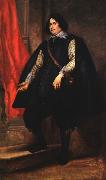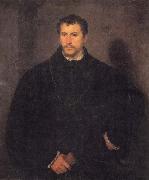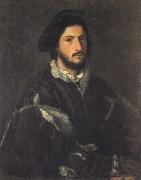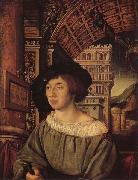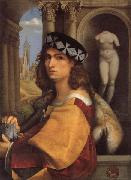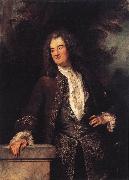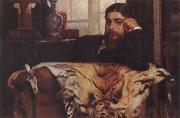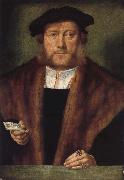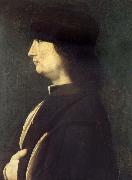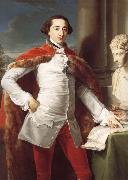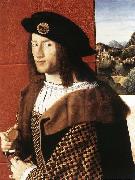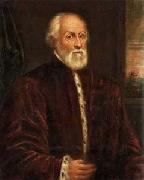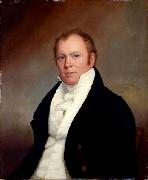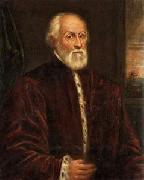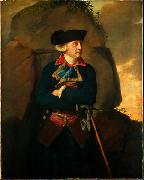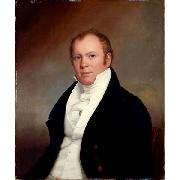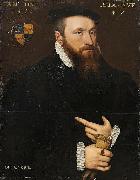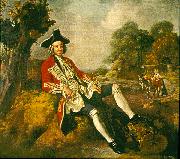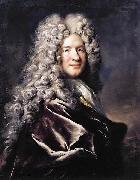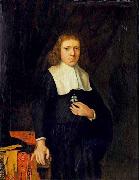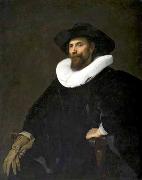Wholesale Oil Painting No Minimum |
|||||||||||
|
|
|||||||||||

|
|||||||||||
|
|
|
||||||||
Anthony Van DyckDutch 1599-1641 Anthony Van Dyck Locations Flemish painter and draughtsman, active also in Italy and England. He was the leading Flemish painter after Rubens in the first half of the 17th century and in the 18th century was often considered no less than his match. A number of van Dyck studies in oil of characterful heads were included in Rubens estate inventory in 1640, where they were distinguished neither in quality nor in purpose from those stocked by the older master. Although frustrated as a designer of tapestry and, with an almost solitary exception, as a deviser of palatial decoration, van Dyck succeeded brilliantly as an etcher. He was also skilled at organizing reproductive engravers in Antwerp to publish his works, in particular The Iconography (c. 1632-44), comprising scores of contemporary etched and engraved portraits, eventually numbering 100, by which election he revived the Renaissance tradition of promoting images of uomini illustri. His fame as a portrait painter in the cities of the southern Netherlands, as well as in London, Genoa, Rome and Palermo, has never been outshone; and from at least the early 18th century his full-length portraits were especially prized in Genoese, British and Flemish houses, where they were appreciated as much for their own sake as for the identities and families of the sitters. |
||||||||
|
|
||||||||
Portrait of a Gentleman
Portrait of a Gentleman Painting ID:: 1068 |
1624
Pinakothek, Munich 1624 Pinakothek, Munich |
|||||||
|
|
||||||||
TitianItalian High Renaissance Painter, ca.1485-1576 Italian painter active in Venice. As a young man he was taught by the Bellini family and worked closely with Giorgione. His early works are so similar in style to Giorgione's as to be indistinguishable, but soon after Giorgione's early death Titian established himself as the leading painter of the Republic of Venice. Among his most important religious paintings is the revolutionary and monumental Assumption (1516 ?C 18) for Santa Maria dei Frari, in which the Virgin ascends to heaven in a blaze of colour accompanied by a semicircle of angels. Titian was also interested in mythological themes, and his many depictions of Venus display his work's sheer beauty and inherent eroticism. Bacchus and Ariadne (1520 ?C 23), with its pagan abandon, is one of the greatest works of Renaissance art. Titian was sought after for his psychologically penetrating portraits, which include portrayals of leading Italian aristocrats, religious figures, and Emperor Charles V. He reached the height of his powers in The Rape of Europa (c. 1559 ?C 62), one of several paintings done for Philip II of Spain. He was recognized as supremely gifted in his lifetime, and his reputation has never declined. |
||||||||
|
|
||||||||
|
|
Portrait of a Gentleman
Portrait of a Gentleman Painting ID:: 28839 |
mk65
Oil on canvas
43 11/16x37 13/16in
mk65 Oil on canvas 43 11/16x37 13/16in |
||||||
|
|
||||||||
TitianItalian High Renaissance Painter, ca.1485-1576 Italian painter active in Venice. As a young man he was taught by the Bellini family and worked closely with Giorgione. His early works are so similar in style to Giorgione's as to be indistinguishable, but soon after Giorgione's early death Titian established himself as the leading painter of the Republic of Venice. Among his most important religious paintings is the revolutionary and monumental Assumption (1516 ?C 18) for Santa Maria dei Frari, in which the Virgin ascends to heaven in a blaze of colour accompanied by a semicircle of angels. Titian was also interested in mythological themes, and his many depictions of Venus display his work's sheer beauty and inherent eroticism. Bacchus and Ariadne (1520 ?C 23), with its pagan abandon, is one of the greatest works of Renaissance art. Titian was sought after for his psychologically penetrating portraits, which include portrayals of leading Italian aristocrats, religious figures, and Emperor Charles V. He reached the height of his powers in The Rape of Europa (c. 1559 ?C 62), one of several paintings done for Philip II of Spain. He was recognized as supremely gifted in his lifetime, and his reputation has never declined. |
||||||||
|
|
||||||||
|
|
Portrait of a Gentleman
Portrait of a Gentleman Painting ID:: 29016 |
mk65
Oil on canvas
33 7/16x26 3/8in
Pitti,Palatine Gallery
mk65 Oil on canvas 33 7/16x26 3/8in Pitti,Palatine Gallery |
||||||
|
|
||||||||
HOLBEIN, AmbrosiusGerman Northern Renaissance Painter, 1494-ca.1519 Painter, draughtsman and designer of woodcuts, son of Hans Holbein. In the drawing of Ambrosius and Hans Holbein the Younger (1511; Berlin, Kupferstichkab.) by their father, Hans's age is given as 14, and although that of Ambrosius cannot be read clearly, he appears to have been the elder brother. In 1514 he was probably working near the Bodensee, and a Virgin and Child (Basle, Kstmus.), with the coat of arms of Johann von Botzheim, Canon of Konstanz Cathedral (c. 1480-1535), appears to be his work. In 1515 he was working as a journeyman to the painter Thomas Schmid (c. 1480-c. 1550-60) on the decoration of the abbot's Festsaal in the Benedictine St Georgkloster at Stein-am-Rhein, which included allegorical figures of women, one of which, Death with a Female Lute-player (in situ), is signed AH. Also in 1515 he joined his brother Hans in Basle, where together they decorated with marginal drawings (1515-16) the copy of Erasmus's Praise of Folly (Basle, Kstmus.) belonging to the schoolmaster Myconius (Oswald Geissh?sler; d 1552); the distinction between the hands of the two brothers can be made only on stylistic grounds. They also painted a school sign for Myconius, each apparently working on a different side. On 25 July 1516 Ambrosius was recorded staying in the house of the painter Hans Herbst, in whose workshop he may have been employed. On 14 February 1517 he was enrolled in the Basle painters' guild, and on 5 June 1518 he became a citizen of the city. Numerous woodcut designs executed for Basle printers from 1517 onwards and signed with Ambrosius Holbein's initials survive, most of which are set in architectural frameworks inspired by the Italian Renaissance, |
||||||||
|
|
||||||||
|
|
Portrait of a Gentleman
Portrait of a Gentleman Painting ID:: 29294 |
mk65
1518
Oil on panel
17x13"
mk65 1518 Oil on panel 17x13" |
||||||
|
|
||||||||
CAPRIOLO, DomenicoItalian painter, Venetian school (b. 1494, Venezia, d. 1528, Treviso) Italian painter. He moved from Venice to Treviso c. 1517, where he is well documented (though there is little about his painting). In 1518-19 he married Camilla, daughter of the painter Pier Maria Pennacchi. A coherent body of work executed between 1518 and 1528 has been reconstructed. Capriolo's first secure work, the Adoration of the Shepherds (Treviso, Mus. Civ.), signed and dated 1518, has a formal structure reminiscent of the late style of Giovanni Bellini, with the broader chromatic range of Palma Vecchio and a crepuscular light that recalls the Venetian works of Giovanni Girolamo Savoldo or Giovanni da Asola ( fl 1512-31). The Assumption in Treviso Cathedral, commissioned in 1520, shows, in its spiralling movement, the influence of the contemporary frescoes of Pordenone in the nearby Malchiostro Chapel. In the Legend of the Doubting Midwife (Treviso, Mus. Civ.), signed and dated 1524, the influence of Savoldo is greater than that of Palma. This is also apparent in the altarpiece of the parish church of Ponzano Veneto (Treviso), dated 1525. The portrait of Lelio Torelli (Barnard Castle, Bowes Mus.), signed and dated 1528, Capriolo's last known work, seems by contrast to reflect local models of portraiture and lies somewhere between the styles of Sebastiano Florigerio and Bernardino Licinio. Other works assigned to Capriolo include: the altarpieces of the parish churches of Cavasagra and Spercenigo, near Treviso; the Adoration of the Shepherds in the sacristy of Serravalle Cathedral at Vittorio Veneto; a fragment of a Nativity (Venice, Mus. Correr); two paintings of the Virgin and Child with Saints (Bucharest, Mus. A.; Conegliano, Mus. Civ. Castello). |
||||||||
|
|
||||||||
|
|
Portrait of a Gentleman
Portrait of a Gentleman Painting ID:: 29295 |
mk65
1512
Oil on canvas
46x33 1/2"
mk65 1512 Oil on canvas 46x33 1/2" |
||||||
|
|
||||||||
Jean-Antoine Watteau1684-1721 Antoine Watteau Art Locations He is best known for his invention of a new genre, the fete galante, a small easel painting in which elegant people are depicted in conversation or music-making in a secluded parkland setting (see under FETE CHAMPETRE). His particular originality lies in the generally restrained nature of the amorous exchanges of his characters, which are conveyed as much by glance as by gesture, and in his mingling of figures in contemporary dress with others in theatrical costume, thus blurring references to both time and place. Watteau work was widely collected during his lifetime and influenced a number of other painters in the decades following his death, especially in France and England. His drawings were particularly admired. Documented facts about Watteau life are notoriously few, though several friends wrote about him after his death (see Champion). Of over two hundred paintings generally accepted as his work |
||||||||
|
|
||||||||
|
|
Portrait of a Gentleman
Portrait of a Gentleman Painting ID:: 29651 |
1715-20
Oil on canvas, 130 x 97 cm 1715-20 Oil on canvas, 130 x 97 cm |
||||||
|
|
||||||||
J.J.TissotFrench 1836-1902 |
||||||||
|
|
||||||||
|
|
Portrait of a Gentleman
Portrait of a Gentleman Painting ID:: 37633 |
mk127
17x26
mk127 17x26 |
||||||
|
|
||||||||
Barthel Bruyn the ElderGerman Northern Renaissance Painter, 1493-1555 |
||||||||
|
|
||||||||
|
|
Portrait of a Gentleman
Portrait of a Gentleman Painting ID:: 42959 |
mk170
circa 1534
Oil onoak
36.2x24.8cm
mk170 circa 1534 Oil onoak 36.2x24.8cm |
||||||
|
|
||||||||
BOLTRAFFIO, Giovanni AntonioItalian High Renaissance Painter, ca.1466-1516 Italian painter and draughtsman. A pupil of Leonardo da Vinci, he was active mainly in Milan and was particularly noted as a portrait painter. |
||||||||
|
|
||||||||
|
|
Portrait of a Gentleman
Portrait of a Gentleman Painting ID:: 42986 |
mk170
circa 1500
Oil on wood
56.5x42.5cm
mk170 circa 1500 Oil on wood 56.5x42.5cm |
||||||
|
|
||||||||
Giovanni Battista MoroniItalian c1520-1578 was a North Italian painter of the Late Renaissance period. He is also called Giambattista Moroni. Best known for his elegantly realistic portraits of the local nobility and clergy, he is considered one of the great portrait painters of sixteenth century Italy. The National Gallery (London) has one of the best collections of his work, including the celebrated portrait known as Il Sarto (The Tailor, a member of the Fenaroli family, illustration). Other portraits are found in the Uffizi (the Nobleman Pointing to Flame inscribed "Et quid volo nisi ut ardeat?"), Berlin Gallery, the Canon Ludovico de' Terzi and Moroni's self-portrait; and in the National Gallery, Washington, the seated half-figure of the Jesuit Ercole Tasso, traditionally called "Titian's Schoolmaster", although there is no real connection with Titian. The Accademia Carrara (Bergamo) (Portrait of an old man). Ashmolean Museum (University of Oxford), Brooks Museum of Art (Memphis, Tennessee), Detroit Institute of Arts, the Fine Arts Museums of San Francisco, the Hermitage Museum, the Honolulu Academy of Arts, Kunsthistorisches Museum (Vienna), the Liechtenstein Museum (Vienna), the Musee du Louvre, Mus??e Cond?? Chantilly (Chantilly, France), Museo Poldi Pezzoli (Milan), the Museum of Fine Arts, Boston, National Galleries of Scotland, the National Gallery of Art (Washington D.C.), the National Gallery of Australia, the National Gallery of Canada, the National Gallery, London, the Norton Simon Museum (Pasadena, California), Pinacoteca Ambrosiana (Milan), Pinacoteca di Brera (Milan), Rijksmuseum, the Ringling Museum of Art (Florida), Studio Esseci (Padua, Italy), University of Arizona Museum of Art, Virginia Museum of Fine Arts and the Uffizi (Portrait of Giovanni Antonio Pantera) are among the public collections holding works by Giovanni Battista Moroni. |
||||||||
|
|
||||||||
|
|
Portrait of a Gentleman
Portrait of a Gentleman Painting ID:: 43054 |
mk170
circa 1555
Oil on canvas
202.3x106.5cm
mk170 circa 1555 Oil on canvas 202.3x106.5cm |
||||||
|
|
||||||||
Pompeo BatoniItalian 1708-1787 Pompeo Batoni Location Italian painter and draughtsman. In his day he was the most celebrated painter in Rome and one of the most famous in Europe. For nearly half a century he recorded the visits to Rome of international travellers on the GRAND TOUR in portraits that remain among the most memorable artistic accomplishments of the period. He was equally gifted as a history painter, and his religious and mythological paintings were sought after by the greatest princes of Europe. |
||||||||
|
|
||||||||
|
|
Portrait of a Gentleman
Portrait of a Gentleman Painting ID:: 43286 |
mk170
1760-1770
Oil on canvas
134.6x96.3cm
mk170 1760-1770 Oil on canvas 134.6x96.3cm |
||||||
|
|
||||||||
BARTOLOMEO VENETOItalian Painter, ca.1470-1531 Italian painter. He worked in Venice, the Veneto and Lombardy in the early decades of the 16th century. Knowledge of him is based largely on the signatures, dates and inscriptions on his works. His early paintings are small devotional pictures; later he became a fashionable portraitist. His earliest dated painting, a Virgin and Child (1502; Venice, priv. col., see Berenson, i, pl. 537), is signed 'Bartolomeo half-Venetian and half-Cremonese'. The inscription probably refers to his parentage, but it also suggests the eclectic nature of his development. This painting is clearly dependent on similar works by Giovanni Bellini and his workshop, but in a slightly later Virgin and Child (1505; Bergamo, Gal. Accad. Cararra) the sharp modelling of the Virgin's headdress and the insistent linear accents in the landscape indicate Bartolomeo's early divergence from Giovanni's depiction of light and space. An inscription on his Virgin and Child of 1510 (Milan, Ercolani Col.) states that he was a pupil of Gentile Bellini, an assertion supported by the tightness and flatness of his early style. The influence of Giovanni is still apparent in the composition of the Circumcision (1506; Paris, Louvre), although the persistent stress on surface patterns and the linear treatment of drapery and outline is closer to Gentile. Bartolomeo's experience as a painter at the Este court in Ferrara (1505-8) probably encouraged the decorative emphasis of his style. In the half-length Portrait of a Man (c. 1510; Cambridge, Fitzwilliam) the flattened form of the fashionably dressed sitter is picked out against a deep red curtain so that the impression of material richness extends across the entire picture surface. |
||||||||
|
|
||||||||
|
|
Portrait of a Gentleman
Portrait of a Gentleman Painting ID:: 63841 |
1512 Oil on panel, 73 x 58 cm Galleria Nazionale d'Arte Antica, Rome Earlier this picture was described as a work of Leonardo. Later, the panel was attributed to Holbein. Finally, of exceptionally high quality, the painting was given to Bartolomeo Veneto by comparing it to two other portraits by the same painter, now at Houston and Washington. The proposed dating is the second decade of the sixteenth century (perhaps 1512), in the wake of Bartolomeo's sojourn in Ferrara between 1506 and 1508. Bartolomeo Veneto (Bartolommeo Veneziano) attracted attention at the end of the 19th century. He was a pupil of Gentile Bellini, he worked at the Court of the Grand Duke of Ferrara and elsewhere. There he came under the influence of LOmbard artists. The artist enriched his original Venetian pictorial language with direct exposure to the influence of Albrecht D?rer, who had been active in Venice in the first years of the sixteenth century. The figures of the knight and the soldier, visible in the background, are literally copied from a 1496 woodcut by D?rer. The identity of the sitter, however, remains a mystery. We do know, however, that he must have been a gentleman attached to the Mantuan court of the Gonzagas. Recently, it was suggested that Bartolomeo Veneto may have been the talented portraitist working in Raphael's workshop who was responsible for the faces of the chair-bearers in the Vatican Palace's Mass of Bolsena. Several inscriptions are legible in the painting: on the medal of the sitter's beret is written "Probasti e Chognovisti"; on the placard above the animal on the medal are the Greek letters epsilon and tau; and along the edge of the plaquette that decorates the sword handle, "IN(?) B:VF" and "NO SPI(E)".Artist:BARTOLOMEO VENETO Title: Portrait of a Gentleman Painted in 1501-1550 , Italian - - painting : portrait 1512 Oil on panel, 73 x 58 cm Galleria Nazionale d'Arte Antica, Rome Earlier this picture was described as a work of Leonardo. Later, the panel was attributed to Holbein. Finally, of exceptionally high quality, the painting was given to Bartolomeo Veneto by comparing it to two other portraits by the same painter, now at Houston and Washington. The proposed dating is the second decade of the sixteenth century (perhaps 1512), in the wake of Bartolomeo's sojourn in Ferrara between 1506 and 1508. Bartolomeo Veneto (Bartolommeo Veneziano) attracted attention at the end of the 19th century. He was a pupil of Gentile Bellini, he worked at the Court of the Grand Duke of Ferrara and elsewhere. There he came under the influence of LOmbard artists. The artist enriched his original Venetian pictorial language with direct exposure to the influence of Albrecht D?rer, who had been active in Venice in the first years of the sixteenth century. The figures of the knight and the soldier, visible in the background, are literally copied from a 1496 woodcut by D?rer. The identity of the sitter, however, remains a mystery. We do know, however, that he must have been a gentleman attached to the Mantuan court of the Gonzagas. Recently, it was suggested that Bartolomeo Veneto may have been the talented portraitist working in Raphael's workshop who was responsible for the faces of the chair-bearers in the Vatican Palace's Mass of Bolsena. Several inscriptions are legible in the painting: on the medal of the sitter's beret is written "Probasti e Chognovisti"; on the placard above the animal on the medal are the Greek letters epsilon and tau; and along the edge of the plaquette that decorates the sword handle, "IN(?) B:VF" and "NO SPI(E)".Artist:BARTOLOMEO VENETO Title: Portrait of a Gentleman Painted in 1501-1550 , Italian - - painting : portrait |
||||||
|
|
||||||||
Domenico TintorettoItalian, 1560-1635,Son of Jacopo Tintoretto. He was taught by his father and assisted him in his workshop. At the age of 17 he was admitted to the Venetian painters' guild, and he is recorded in the confraternity of painters from 1594. He began his career by helping his father to execute the paintings in the Sala del Collegio and Sala del Senato in the Doge's Palace, Venice. Following this he worked independently at the palace, on the Sala dello Scrutinio and the Sala del Maggiore Consiglio. His training with his father helped him in his own compositions, several of which, such as the Battle of Salvore, or the Second Conquest of Constantinople, are heroic battle themes with complex groupings and dramatic poses. In the last two decades of the 16th century Domenico concentrated on religious commissions in Venice, including a Last Supper and Crucifixion (both c. 1583) for S Andrea della Zirada (both in situ), a Marriage of the Virgin for S Giorgio Maggiore (in situ) and a Crucifixion for the Scuola dei Mercanti. |
||||||||
|
|
||||||||
|
|
Portrait of a Gentleman
Portrait of a Gentleman Painting ID:: 80404 |
Portrait of a Gentleman, oil on canvas // Priv. coll
Date 16-17 c,
cjr Portrait of a Gentleman, oil on canvas // Priv. coll Date 16-17 c, cjr |
||||||
|
|
||||||||
Rodrigo de VillandrandoRodrigo de Villandrando (1588 - December 1623) was a court painter during the reign of Philip III of Spain. He worked in the tradition of Alonso Senchez Coello and Juan Pantoja de la Cruz. His death opened the road to court for the young painter Diego Velezquez from Sevilla. |
||||||||
|
|
||||||||
|
|
Portrait of a Gentleman
Portrait of a Gentleman Painting ID:: 82710 |
Oil on canvas
Dimensions Height: 125 cm (49.2 in).
cyf Oil on canvas Dimensions Height: 125 cm (49.2 in). cyf |
||||||
|
|
||||||||
John Neagle1796-1860 John Neagle Gallery Neagle's training in art began with instruction from the drawing-master Pietro Ancora and an apprenticeship to Thomas Wilson, a well-connected painter of signs and coaches in Philadelphia. Wilson introduced him to the painters Bass Otis and Thomas Sully, and Neagle became a protege of the latter. In 1818 Neagle decided to concentrate exclusively on portraits, setting up shop as an independent master. Aside from brief sojourns in Lexington, Kentucky, and New Orleans, Louisiana, he spent his career in Philadelphia. In May 1826 he married Sully's stepdaughter Mary, and for a time the son-in-law and father-in-law dominated the field of portraiture in the city. Neagle served as Director of the Pennsylvania Academy of Fine Arts, and was also a founder and president (1835-43) of the Artist's Fund Society of Philadelphia. |
||||||||
|
|
||||||||
|
|
Portrait of a gentleman
Portrait of a gentleman Painting ID:: 84300 |
Date 1845(1845)
Medium Oil on canvas
Dimensions 76.2 x 63.5 cm (30 x 25 in)
cjr Date 1845(1845) Medium Oil on canvas Dimensions 76.2 x 63.5 cm (30 x 25 in) cjr |
||||||
|
|
||||||||
Domenico TintorettoItalian, 1560-1635,Son of Jacopo Tintoretto. He was taught by his father and assisted him in his workshop. At the age of 17 he was admitted to the Venetian painters' guild, and he is recorded in the confraternity of painters from 1594. He began his career by helping his father to execute the paintings in the Sala del Collegio and Sala del Senato in the Doge's Palace, Venice. Following this he worked independently at the palace, on the Sala dello Scrutinio and the Sala del Maggiore Consiglio. His training with his father helped him in his own compositions, several of which, such as the Battle of Salvore, or the Second Conquest of Constantinople, are heroic battle themes with complex groupings and dramatic poses. In the last two decades of the 16th century Domenico concentrated on religious commissions in Venice, including a Last Supper and Crucifixion (both c. 1583) for S Andrea della Zirada (both in situ), a Marriage of the Virgin for S Giorgio Maggiore (in situ) and a Crucifixion for the Scuola dei Mercanti. |
||||||||
|
|
||||||||
|
|
Portrait of a Gentleman
Portrait of a Gentleman Painting ID:: 84642 |
oil on canvas // Priv. coll
Date 16-17 c,
cyf oil on canvas // Priv. coll Date 16-17 c, cyf |
||||||
|
|
||||||||
Giovanni Battista MoroniItalian c1520-1578 was a North Italian painter of the Late Renaissance period. He is also called Giambattista Moroni. Best known for his elegantly realistic portraits of the local nobility and clergy, he is considered one of the great portrait painters of sixteenth century Italy. The National Gallery (London) has one of the best collections of his work, including the celebrated portrait known as Il Sarto (The Tailor, a member of the Fenaroli family, illustration). Other portraits are found in the Uffizi (the Nobleman Pointing to Flame inscribed "Et quid volo nisi ut ardeat?"), Berlin Gallery, the Canon Ludovico de' Terzi and Moroni's self-portrait; and in the National Gallery, Washington, the seated half-figure of the Jesuit Ercole Tasso, traditionally called "Titian's Schoolmaster", although there is no real connection with Titian. The Accademia Carrara (Bergamo) (Portrait of an old man). Ashmolean Museum (University of Oxford), Brooks Museum of Art (Memphis, Tennessee), Detroit Institute of Arts, the Fine Arts Museums of San Francisco, the Hermitage Museum, the Honolulu Academy of Arts, Kunsthistorisches Museum (Vienna), the Liechtenstein Museum (Vienna), the Musee du Louvre, Mus??e Cond?? Chantilly (Chantilly, France), Museo Poldi Pezzoli (Milan), the Museum of Fine Arts, Boston, National Galleries of Scotland, the National Gallery of Art (Washington D.C.), the National Gallery of Australia, the National Gallery of Canada, the National Gallery, London, the Norton Simon Museum (Pasadena, California), Pinacoteca Ambrosiana (Milan), Pinacoteca di Brera (Milan), Rijksmuseum, the Ringling Museum of Art (Florida), Studio Esseci (Padua, Italy), University of Arizona Museum of Art, Virginia Museum of Fine Arts and the Uffizi (Portrait of Giovanni Antonio Pantera) are among the public collections holding works by Giovanni Battista Moroni. |
||||||||
|
|
||||||||
|
|
Portrait of a Gentleman
Portrait of a Gentleman Painting ID:: 86051 |
Date c. 1550(1550)
Medium Oil on canvas
Dimensions Height: 202 cm (79.5 in). Width: 106 cm (41.7 in).
cjr Date c. 1550(1550) Medium Oil on canvas Dimensions Height: 202 cm (79.5 in). Width: 106 cm (41.7 in). cjr |
||||||
|
|
||||||||
Joseph wright of derby1734-97 English painter. He painted portraits, landscapes and subjects from literature, but his most original and enduringly celebrated works are a few which reflect the philosophical and technological preoccupations of the later 18th century and are characterized by striking effects of artificial light. He was the first major English painter to work outside the capital all his life: apart from spells in Liverpool (1768-71), Italy (1773-5) and Bath (1775-7), he lived and worked in his native Derby, though exhibiting in London at both the Society of Artists (1765-76, 1791) and the Royal Academy (1778-82, 1789-90, 1794). |
||||||||
|
|
||||||||
|
|
Portrait of a Gentleman
Portrait of a Gentleman Painting ID:: 87885 |
Oil on canvas
cyf Oil on canvas cyf |
||||||
|
|
||||||||
John Neagle1796-1860 John Neagle Gallery Neagle's training in art began with instruction from the drawing-master Pietro Ancora and an apprenticeship to Thomas Wilson, a well-connected painter of signs and coaches in Philadelphia. Wilson introduced him to the painters Bass Otis and Thomas Sully, and Neagle became a protege of the latter. In 1818 Neagle decided to concentrate exclusively on portraits, setting up shop as an independent master. Aside from brief sojourns in Lexington, Kentucky, and New Orleans, Louisiana, he spent his career in Philadelphia. In May 1826 he married Sully's stepdaughter Mary, and for a time the son-in-law and father-in-law dominated the field of portraiture in the city. Neagle served as Director of the Pennsylvania Academy of Fine Arts, and was also a founder and president (1835-43) of the Artist's Fund Society of Philadelphia. |
||||||||
|
|
||||||||
|
|
Portrait of a gentleman
Portrait of a gentleman Painting ID:: 88762 |
1845(1845)
Medium Oil on canvas
Dimensions 76.2 x 63.5 cm (30 x 25 in)
cyf 1845(1845) Medium Oil on canvas Dimensions 76.2 x 63.5 cm (30 x 25 in) cyf |
||||||
|
|
||||||||
Giovanni Battista MoroniItalian c1520-1578 was a North Italian painter of the Late Renaissance period. He is also called Giambattista Moroni. Best known for his elegantly realistic portraits of the local nobility and clergy, he is considered one of the great portrait painters of sixteenth century Italy. The National Gallery (London) has one of the best collections of his work, including the celebrated portrait known as Il Sarto (The Tailor, a member of the Fenaroli family, illustration). Other portraits are found in the Uffizi (the Nobleman Pointing to Flame inscribed "Et quid volo nisi ut ardeat?"), Berlin Gallery, the Canon Ludovico de' Terzi and Moroni's self-portrait; and in the National Gallery, Washington, the seated half-figure of the Jesuit Ercole Tasso, traditionally called "Titian's Schoolmaster", although there is no real connection with Titian. The Accademia Carrara (Bergamo) (Portrait of an old man). Ashmolean Museum (University of Oxford), Brooks Museum of Art (Memphis, Tennessee), Detroit Institute of Arts, the Fine Arts Museums of San Francisco, the Hermitage Museum, the Honolulu Academy of Arts, Kunsthistorisches Museum (Vienna), the Liechtenstein Museum (Vienna), the Musee du Louvre, Mus??e Cond?? Chantilly (Chantilly, France), Museo Poldi Pezzoli (Milan), the Museum of Fine Arts, Boston, National Galleries of Scotland, the National Gallery of Art (Washington D.C.), the National Gallery of Australia, the National Gallery of Canada, the National Gallery, London, the Norton Simon Museum (Pasadena, California), Pinacoteca Ambrosiana (Milan), Pinacoteca di Brera (Milan), Rijksmuseum, the Ringling Museum of Art (Florida), Studio Esseci (Padua, Italy), University of Arizona Museum of Art, Virginia Museum of Fine Arts and the Uffizi (Portrait of Giovanni Antonio Pantera) are among the public collections holding works by Giovanni Battista Moroni. |
||||||||
|
|
||||||||
|
|
Portrait of a Gentleman
Portrait of a Gentleman Painting ID:: 90113 |
1550(1550)
Medium oil on canvas
cyf 1550(1550) Medium oil on canvas cyf |
||||||
|
|
||||||||
Anthonis Mor(c. 1517 - 1577) was a Netherlandish portrait painter, much in demand by the courts of Europe. He has also been referred to as Antoon, Anthonius, Anthonis, or Mor van Dashorst, Antonio Moro, Anthony More, etc., but signed most of his portraits as, Anthonis Mor. Mor was born in Utrecht, Netherlands by some estimation between 1516 and 1520. What is known of his early life is that his artistic education commenced under Jan van Scorel. His earliest work is probably a portrait at Stockholm, dated 1538. A group of Knights of St. John, at Utrecht, supposed to have been painted about 1541; a picture of two pilgrims at the Gemäldegalerie, Berlin, dated 1544; together with the portrait of an unknown woman, in the Lille gallery, were probably among his earliest works although their authenticity has not been proved. In 1547, he was received as a member of the Venerable Guild of St. Luke at Antwerp, and shortly afterwards (about 1548) he attracted the attention of Cardinal Granvelle, Bishop of Arras, who became his steady patron. Of the portraits executed during the early period of his career as Granvelle's protege, two are especially notable: one of the bishop himself (in the imperial gallery in Vienna), and one of the Duke of Alba, which now belongs to the Hispanic Society of New York. Between 1549 and 1550 Prince Philip II of Spain (1527-1598) traveled around the Netherlands to present himself as the future ruler. Mor painted his portrait in Brussels in 1549. He probably visited Italy (when exactly is not known) where he copied some works by Titian, notably the Danaë. |
||||||||
|
|
||||||||
|
|
Portrait of a Gentleman
Portrait of a Gentleman Painting ID:: 90804 |
oil on panel, 68 x 53 cm (26.8 x 20.9 in).
Date 1560(1560)
cyf oil on panel, 68 x 53 cm (26.8 x 20.9 in). Date 1560(1560) cyf |
||||||
|
|
||||||||
MORETTO da BresciaItalian High Renaissance Painter, 1498-1554 Italian painter. Together with Romanino and Giovanni Girolamo Savoldo, he was one of the most distinguished painters of Brescia of the 16th century. Influenced by both Lombard verism and contemporary Venetian painters, Moretto created an individual style in which realism and Venetian light and colour were perfectly balanced. He was personally involved in the local movement of Roman Catholic reform, and this is reflected in his direct, solemn and often moving depictions of religious subjects. |
||||||||
|
|
||||||||
|
|
Portrait of a Gentleman
Portrait of a Gentleman Painting ID:: 91517 |
1526(1526)
Medium oil on canvas
Dimensions Height: 201 cm (79.1 in). Width: 92 cm (36.2 in).
cyf 1526(1526) Medium oil on canvas Dimensions Height: 201 cm (79.1 in). Width: 92 cm (36.2 in). cyf |
||||||
|
|
||||||||
Francis HaymanEnglish Painter, 1708-1776,English painter and illustrator. He was in London at the age of 10, and from 1718 until c. 1725 he was apprenticed to Robert Brown (d 1753), a decorative painter. From 1732 Hayman was employed as a scene painter at Goodman's Fields Theatre, where he painted allegorical works such as The King Attended by Peace, with Liberty and Justice Trampling on Tyranny and Oppression on the pit ceiling (destr.). He moved to Drury Lane Theatre in 1736, shortly before the Licensing Act closed Goodman's Fields. At Drury Lane he painted scenery for Thomas Arne's masque The Fall of Phaeton (1736) and was praised for his naturalistic landscapes. From the late 1730s he began accepting commissions for portraits and conversation pieces. His success in the field of portraiture rested on the dearth of good portrait painters in England at the time and his exploitation of a growing middle-class clientele. Hayman painted portraits of doctors, literary men and actors. |
||||||||
|
|
||||||||
|
|
Portrait of a Gentleman
Portrait of a Gentleman Painting ID:: 93253 |
c. 1750
Medium oil on canvas
Dimensions 25 x 30 1/8 in. (63.5 x 76.5 cm)
cjr c. 1750 Medium oil on canvas Dimensions 25 x 30 1/8 in. (63.5 x 76.5 cm) cjr |
||||||
|
|
||||||||
Nicolas de Largilliere1656-1746 French Nicolas de Largilliere Gallery Nicolas de Largilli??re (October 10, 1656 - March 20, 1746), French painter, was born in Paris. His father, a merchant, took him to Antwerp at the age of three. As a boy, he spent nearly two years in London. Sometime after his return to Antwerp, a failed attempt at business led him to the studio of Goubeau. However, Largilli??re left at the age of eighteen to seek his fortune in England, where he was befriended and employed by Lely, for four years at Windsor. His skills attracted Charles II, who wished to retain him in his service, but the fury aroused by the Rye House Plot against Roman Catholics alarmed Largilli??re. He left for Paris where he was well received by Le Brun and Van der Meulen. Despite his Flemish training as a portrait-painter, his reputation was soon established. Largilli??re's brilliant colour and lively touch attracted celebrities of his day??actresses, public men and popular preachers flocked to his studio. President Lambert, with his beautiful wife and daughter, were among his most noted subjects. |
||||||||
|
|
||||||||
|
|
Portrait of a Gentleman
Portrait of a Gentleman Painting ID:: 95318 |
Date fourth quarter of 17th century or first quarter of 18th century
Medium oil
TTD Date fourth quarter of 17th century or first quarter of 18th century Medium oil TTD |
||||||
|
|
||||||||
Jacobus VrelDutch Baroque Era Painter, active ca.1654-1662 Dutch painter. Some 38 paintings, depicting domestic interiors, street scenes and a church interior, have been attributed to this enigmatic artist. Four copies after his works are possibly autograph; one drawing has also been ascribed to him. Over half of Vrel's paintings are signed or bear traces of signatures that were altered to read Johannes Vermeer or Pieter de Hooch, with whose paintings Vrel's work was often confused. Indeed, Theophile Thore discussed Vermeer as a townscape painter largely on the basis of works that were actually by Vrel. |
||||||||
|
|
||||||||
|
|
Portrait of a gentleman
Portrait of a gentleman Painting ID:: 96614 |
circa 1650(1650)
Medium oil on canvas
Dimensions 43 X 34 cm
cyf circa 1650(1650) Medium oil on canvas Dimensions 43 X 34 cm cyf |
||||||
|
|
||||||||
Bartholomeus van der Helst1613-1670 Dutch Bartholomeus Van Der Helst Galleries Dutch painter. He was the son of a Haarlem inn-keeper and presumably undertook part or all of his training in Amsterdam. His earliest works suggest that the painter Nicolaes Eliasz. Pickenoy was his master. Although van der Helst had probably already established himself as an independent master by the time he married Anna du Pire in Amsterdam in 1636, his earliest known work, a portrait of The Regents of the Walloon Orphanage, Amsterdam (Amsterdam, Maison Descartes), dates from 1637. Stylistically it is close to the work of Pickenoy. His portrait of a Protestant Minister of 1638 (Rotterdam, Boymans-van Beuningen) reveals the influence of Rembrandt. The young artist must have risen rapidly to fame in Amsterdam, for as early as 1639 he received the prestigious commission for a large painting for the Kloveniersdoelen (Arquebusiers or Musketeers Hall): The Civic Guard Company of Capt. Roelof Bicker and Lt Jan Michielsz. Blaeuw (Amsterdam, Rijksmus.), which formed part of the same series as Rembrandt Night Watch (Amsterdam, Rijksmus.). Van der Helst may not have completed this commission until 1642 or 1643. The ingenious arrangement of the figures in a broad composition shows the artist special talent for composing large groups. Pickenoy influence is less noticeable here than in the portrait of 1637; the self-assured poses of the individual figures were to become a characteristic feature of van der Helst work. The successful execution of this portrait established van der Helst reputation: from 1642, when he began to receive an increasing number of commissions for individual portraits, until 1670 he was the leading portrait painter of the ruling class in Amsterdam. From 1642 his technique in portrait painting gradually became more fluent and the rendering of costume materials more detailed. Some typical portraits of his earlier period are those of Andries Bicker (Amsterdam, Rijksmus.), his wife Catharina Gansneb Tengnagel (Dresden, Gemeldegal. Alte Meister) and their son Gerard Bicker (Amsterdam, Rijksmus.), all of 1642, and the Portrait of a Young Girl (1645; London, N.G.). In 1648 van der Helst painted a second civic guard portrait, The Celebration of the Peace of M?nster at the Crossbowmen Headquarters, Amsterdam (Amsterdam, Rijksmus.), a superbly composed and well painted portrait that, until the late 19th century, was considered one of the masterpieces of the Golden Age but later lost popularity because of its smooth and modish execution. It can nevertheless still be regarded as one of the most important group portraits of the 17th century. Its technical perfection, characterized by a well-modelled rendering of the figures and a smooth handling of the brush, dominated the rest of van der Helst oeuvre. |
||||||||
|
|
||||||||
|
|
Portrait of a Gentleman
Portrait of a Gentleman Painting ID:: 98097 |
1653(1653)
Medium oil on canvas
Dimensions 111.2 x 95.1 cm
cyf 1653(1653) Medium oil on canvas Dimensions 111.2 x 95.1 cm cyf |
||||||
|
|
||||||||
|
Bartholomeus van der Helst 1613-1670 Dutch Bartholomeus Van Der Helst Galleries Dutch painter. He was the son of a Haarlem inn-keeper and presumably undertook part or all of his training in Amsterdam. His earliest works suggest that the painter Nicolaes Eliasz. Pickenoy was his master. Although van der Helst had probably already established himself as an independent master by the time he married Anna du Pire in Amsterdam in 1636, his earliest known work, a portrait of The Regents of the Walloon Orphanage, Amsterdam (Amsterdam, Maison Descartes), dates from 1637. Stylistically it is close to the work of Pickenoy. His portrait of a Protestant Minister of 1638 (Rotterdam, Boymans-van Beuningen) reveals the influence of Rembrandt. The young artist must have risen rapidly to fame in Amsterdam, for as early as 1639 he received the prestigious commission for a large painting for the Kloveniersdoelen (Arquebusiers or Musketeers Hall): The Civic Guard Company of Capt. Roelof Bicker and Lt Jan Michielsz. Blaeuw (Amsterdam, Rijksmus.), which formed part of the same series as Rembrandt Night Watch (Amsterdam, Rijksmus.). Van der Helst may not have completed this commission until 1642 or 1643. The ingenious arrangement of the figures in a broad composition shows the artist special talent for composing large groups. Pickenoy influence is less noticeable here than in the portrait of 1637; the self-assured poses of the individual figures were to become a characteristic feature of van der Helst work. The successful execution of this portrait established van der Helst reputation: from 1642, when he began to receive an increasing number of commissions for individual portraits, until 1670 he was the leading portrait painter of the ruling class in Amsterdam. From 1642 his technique in portrait painting gradually became more fluent and the rendering of costume materials more detailed. Some typical portraits of his earlier period are those of Andries Bicker (Amsterdam, Rijksmus.), his wife Catharina Gansneb Tengnagel (Dresden, Gemeldegal. Alte Meister) and their son Gerard Bicker (Amsterdam, Rijksmus.), all of 1642, and the Portrait of a Young Girl (1645; London, N.G.). In 1648 van der Helst painted a second civic guard portrait, The Celebration of the Peace of M?nster at the Crossbowmen Headquarters, Amsterdam (Amsterdam, Rijksmus.), a superbly composed and well painted portrait that, until the late 19th century, was considered one of the masterpieces of the Golden Age but later lost popularity because of its smooth and modish execution. It can nevertheless still be regarded as one of the most important group portraits of the 17th century. Its technical perfection, characterized by a well-modelled rendering of the figures and a smooth handling of the brush, dominated the rest of van der Helst oeuvre. Portrait of a Gentleman 1653(1653) Medium oil on canvas Dimensions 111.2 x 95.1 cm cyf |
||||||||
|
|
||||||||
|
Prev Next
|
||||||||
|
|
||||||||
|
Related Paintings to Bartholomeus van der Helst :. |
||||||||
|
|
||||||||
|
CONTACT US |
